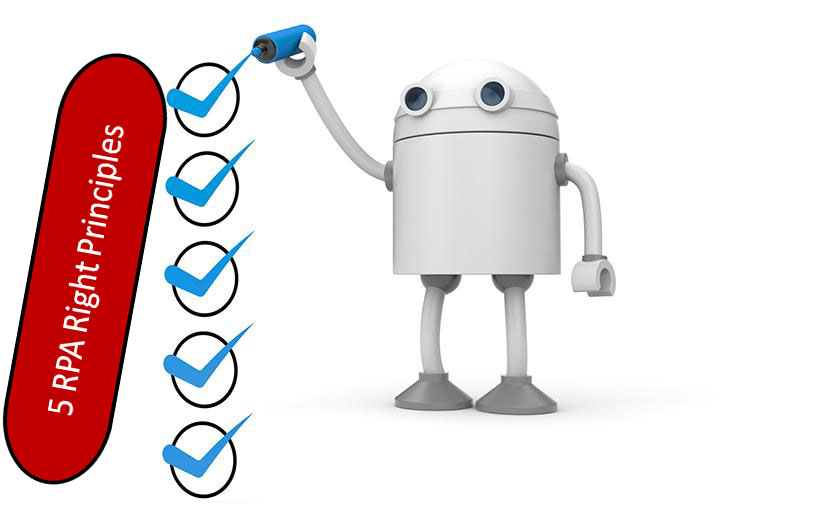RPA (Robotic Process Automation) focuses on the automation of human tasks using technology, principally software technology running on classic hardware (computers), but in the future news technologies will be added. In this post we are thinking about RPA supported by software technology.
Currently RPA software tools permit the automation of human well known rules and structured data repetitive tasks in front of the screen. So you can quickly build automated processes based on existing ones. It means that you can easily lunch quickwins transforming into digital what before had a human and offline group of actions without impact the rest of the end to end process (the last can and should be done in the BPM roadmap of the organization).

RPA benefits
So in a quickwin iterative roadmap you can improve quality and decrease activity cycle times by assisting or removing labor in or from activities, cost reduction by eliminating head count or moving employees to greater value tasks.
5 different ways to derail:
Some organizations misunderstand the RPA whole context and take a simplistic and quick road following these wrong principles:

RPA wrong way
- RPA is a tool that can be applied in isolation.
- RPA is only a means to reduce the number of employees.
- RPA can be applied to all processes.
- RPA can be applied without impact in the organization.
- The important is to choose the RPA tool suite and go.
The 5 RPA Right Principles description – The Digital Transformation Strategy Advisor’s Tips
If you don’t want that your RPA transformation derails I recommend you to take in mind the following 5 RPA Right Principles that I have for success:

robot checking 5 RPA Right Principles
- Firstly the “map” then the “point” on it. RPA is an approach that has sense in a BPM organization in its road to a process automation one:
- RPA is good enabler for digital transformation; but learning about RPA suitability and functionality should be done in conjunction with building a broader enterprise business process automation (BPA) roadmap (please take a look at our post “What BPM is and its relationship with SOA and RPA”).
- So a RPA transformation should be managed following a basic Deming 4 phase cycle (PDCA cycle).

Deming 4 phase cycle (PDCA cycle)
- Coherent Objective: focusing RPA only on reducing labor costs in the short term may be a short-sighted understanding of this approach. In the whole picture of this transformation you should identify and quantify revenue-generating activities aligned with the digital transformation strategy of the company, service quality improvement and decrease activity cycle times.
- Eligibility: Firstly the processes that could be automated in three weeks (or less) and start to deliver benefits. The good process for RPA application should have the following characteristics:

Robot Thinking about the process
- Clear Process that is or can be documented,
- Repetitive (a lot),
- Process validation is possible,
- Standardized and Stable,
- Rule-based,
- Data that is or can be structured,
- Process in which there are people acting as “swivel chair integration” rekeying data between systems.
- Change Management: The entire organization must be aligned to the objectives and ready to adopt RPA. And it is not as easy as push a button.

Taking charge of change
- Build Internal Skills for RPA: get external help if it is necessary. And build a team of business and IT people to act as a center of excellence for RPA.
- Internal communication: all people, in the different departments, should be informed and formed previous any change in their daily tasks and future role.
- Know-how is and remains in the employees. So you have to design a strategy to maintain this know-how at same time you get the most of this transformation cutting employee cost and moving people to the new or greater value processes in the company.
- Choose the tool suite at the end not at the beginning: once you have your roadmap and your map of processes is the best moment for evaluate the suitability of the different RPA suites. I recommend you to define different dimensions with different attributes to evaluate through specific KPIs.

5 RPA Right Principles
So don’t forget take the 5 RPA Right Principles when you think it is time for RPA in your organization.

